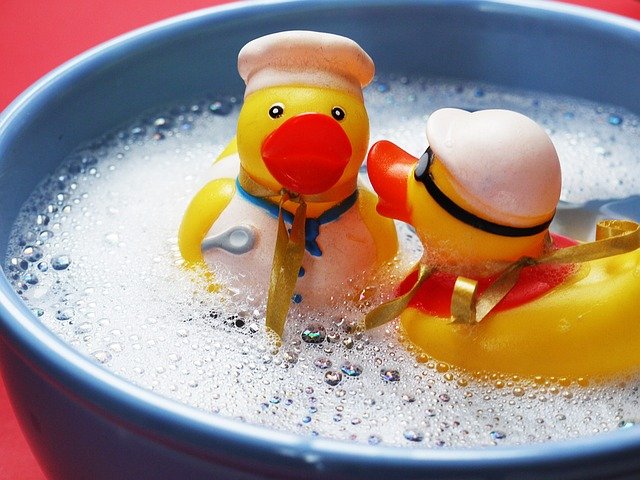Today we celebrate the birthday of Rubber Ducky. This day is observed annually on January 13th since the debut of the episode in 1970 in Sesame Street.
If you grew up watching Sesame Street, you would be familiar with Ernie who loves to bring his rubber when your mom brings out the yellow duck encouraging fun time with their little ones during bathtub time.
A rubber duck is a toy shaped like a stylized duck, generally yellow with a flat base. It may be made of rubber or rubber-like material such as vinyl plastic. The yellow rubber duck has achieved an iconic status in Western pop culture and is often symbolically linked to bathing.
The history of the rubber duck is linked to the emergence of rubber manufacturing in the late 19th century. The earliest rubber ducks were made from harder rubber when manufacturers began using Charles Goodyear‘s invention, vulcanized rubber.
Rubber ducks are collected by enthusiasts. The 2011 Guinness World Record for World’s Largest Rubber Duck Collection stood at 5,631 different rubber ducks and was awarded to Charlotte Lee. In 2013, the rubber duck was inducted into the Toy Hall of Fame, a museum in Rochester, New York, along with the game of chess.
The world’s largest rubber duck was created by Dutch artist Florentijn Hofman in 2007, measuring 16.5 m × 20 m × 32 m (54 ft × 66 ft × 105 ft) and weighing about 600 kilograms (1,300 lb).
Since 2007, several ducks of various sizes created by Hofman have been on display in countries and territories such as Amsterdam, Netherlands; Lommel, Belgium; Osaka, Japan; Sydney, Australia; São Paulo, Brazil; Hong Kong, China; Kaohsiung, Taiwan; and Seoul, Korea; until 14 November 2014, and went on display in the United States after 20 October 2013.
Did you know that in January of 1992, a shipment of 29,000 rubber duckies fell off a cargo ship in the Pacific Ocean? By 2007, the “Friendly Floatees” had traveled 17,000 miles around the world on the ocean currents. Some are still afloat today! Over time, people reported seeing the duckies in places such as Australia, Indonesia, South America, the Bering Strait, the Arctic, and in the Atlantic Ocean!
So, today, celebrate this day, get those rubber ducky out, if you have them hidden in your cupboard. Share some photos on social media using #RubberDuckyDay
1968 Johnny Cash performs at Folsom Prison
In the midst of depression and a steep decline in his musical career, legendary country singer Johnny Cash arrives to play for inmates at California’s Folsom Prison on January 13, 1968. The concert and the subsequent live album launched him back into the charts and re-defined his career.
Despite his outlaw image, Cash never went to prison, save for a few nights drying out in various jails. It was not his own experience but rather the crime film Inside the Walls of Folsom Prison that inspired him to pen “Folsom Prison Blues,” which was a modest hit for Cash in 1956. The song, characteristically mournful, is written from the point of view of an inmate “stuck in Folsom Prison” after shooting a man in Reno “just to watch him die” – Cash explained that he wanted to come up with the most senseless reason imaginable for the speaker to have committed murder. A decade later, Cash’s alcoholism and addiction to pills had taken a marked toll on his health. Cash was popular in prisons across America and was known to correspond with imprisoned fans, and first played at Folsom in 1966 on the suggestion of a local preacher. Two years later, needing something to jump-start his career, he convinced his record company to let him record a live album there.
(excerpted from https://www.history.com/this-day-in-history/johnny-cash-performs-at-folsom-prison-california)


